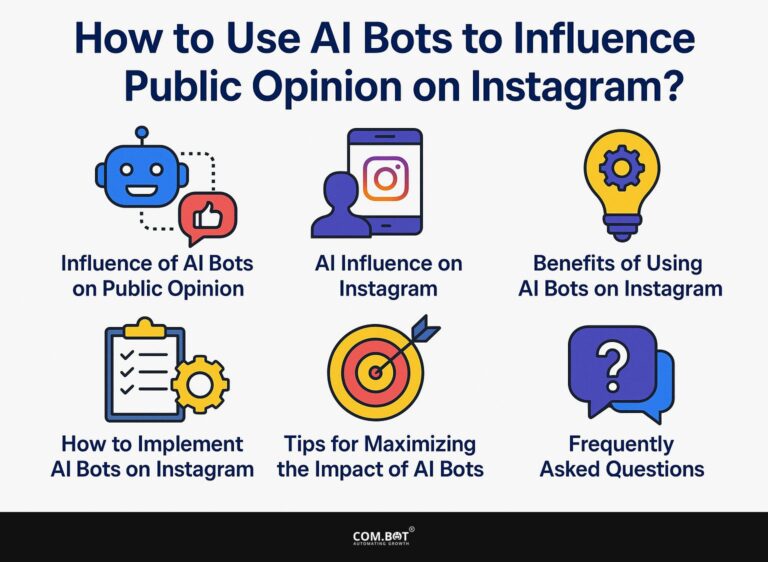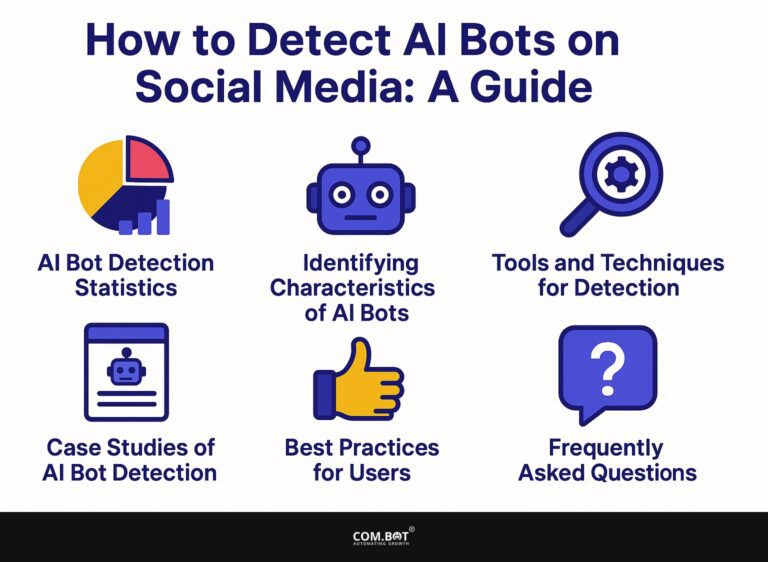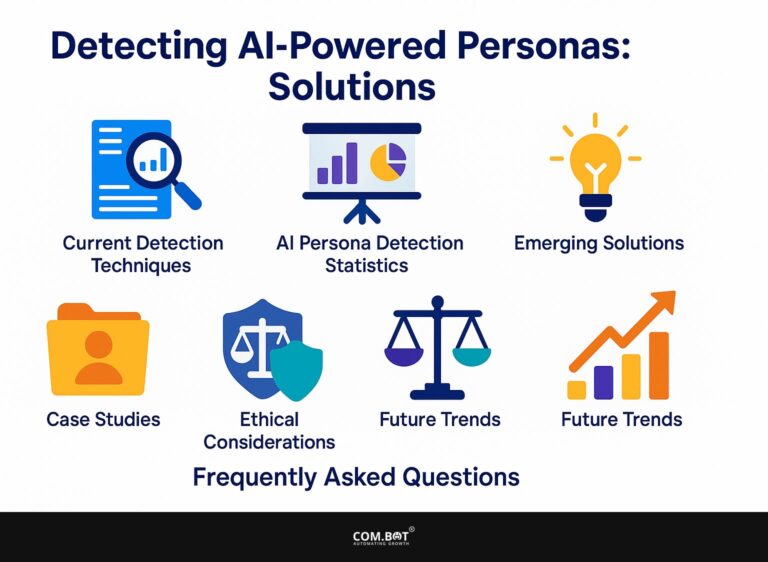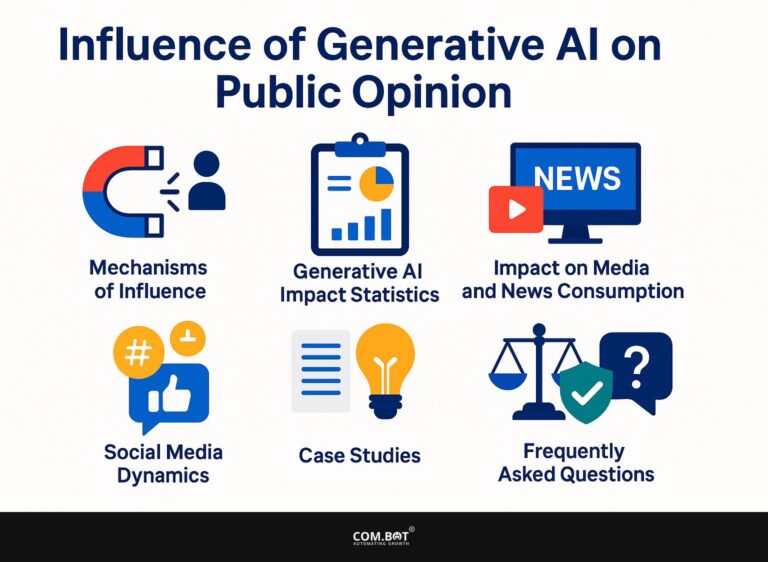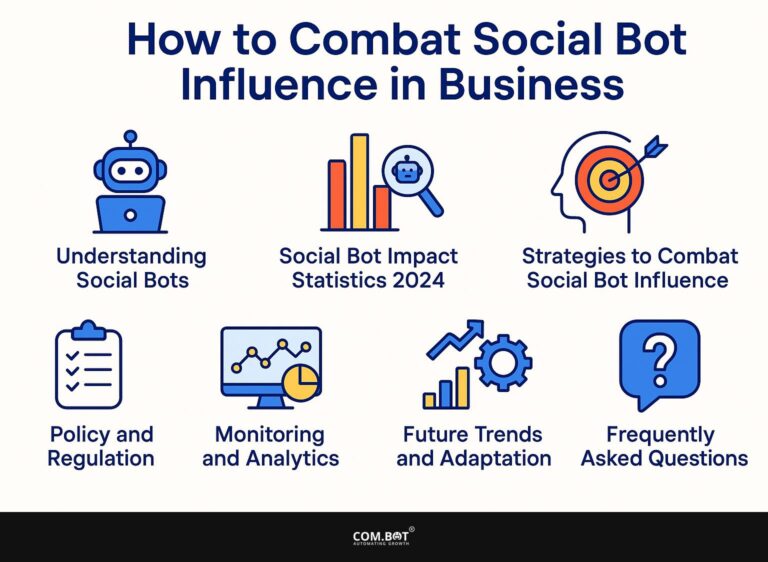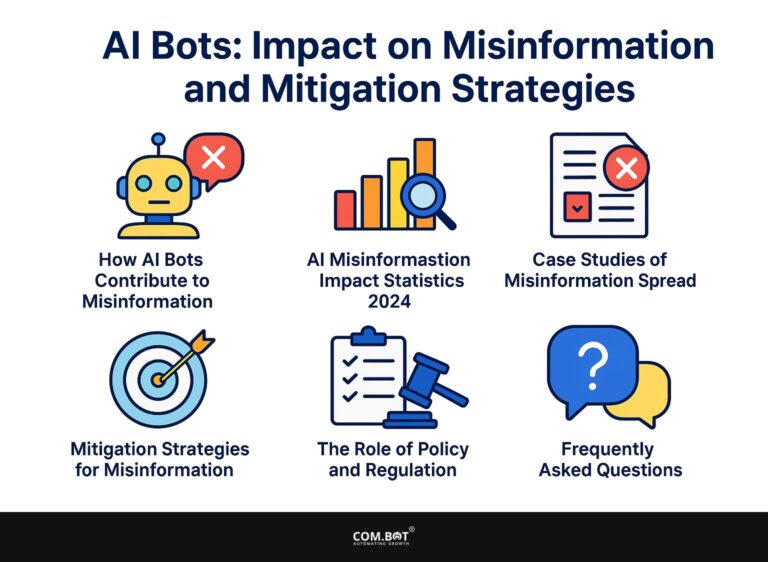How to Detect Social Media Bots? Essential Tools for Marketers
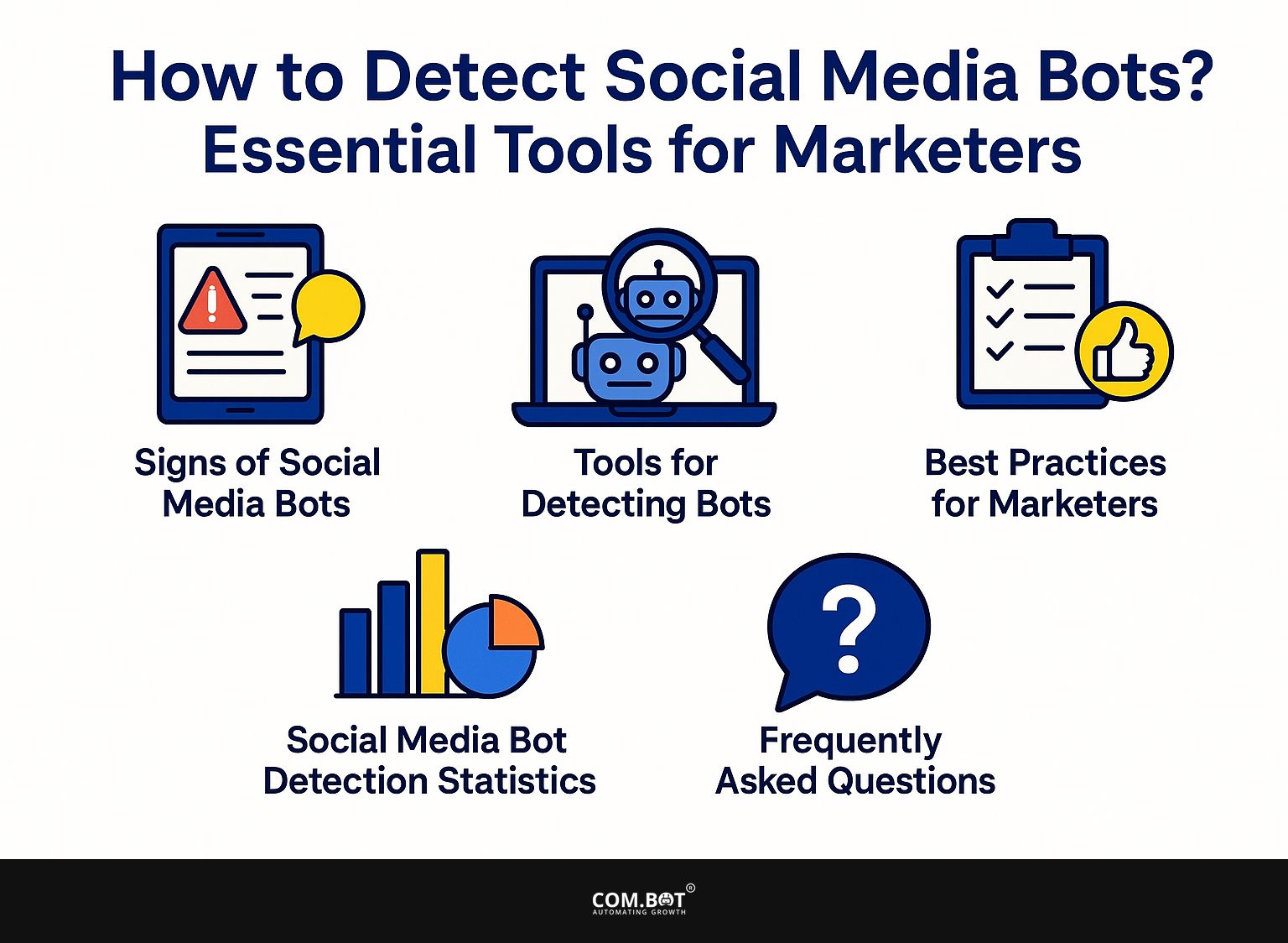
Identifying social media bots is important because incorrect information spreads fast. Platforms such as Twitter and Meta are dealing with issues from advanced language models and automated accounts. Marketers require reliable tools to detect these bots.
This article will guide you through essential methods to identify detected bots, ensuring your campaigns remain authentic and credible. Let’s dive into how you can safeguard your brand against digital deception.
Key Takeaways:
- Unusual posting patterns and low engagement metrics are key signs of social media bots.
- Bot detection software and manual analysis techniques are essential tools for marketers to detect and combat bots.
- It is important for marketers to regularly monitor and report on bot activity, and adjust campaign strategies based on bot detection.
- 1 Signs of Social Media Bots
- 2 Tools for Detecting Bots
- 3 Best Practices for Marketers
- 4 Social Media Bot Detection Statistics
- 5 Frequently Asked Questions
- 5.1 1. How can I tell if a social media account is a bot?
- 5.2 2. Are there any free tools available to detect social media bots?
- 5.3 3. Can I report a suspected bot account to the social media platform?
- 5.4 4. How can detecting social media bots benefit marketers?
- 5.5 5. Are there any red flags to look for when detecting social media bots?
- 5.6 6. Can social media bots be used for malicious purposes?
1. Definition and Purpose
Social media bots are programmed accounts that can automatically handle interactions, help with customer service, or spread false information. They are often used by operators to run large campaigns.
These bots serve various purposes across platforms. For instance, customer service bots on Facebook Messenger can respond to user inquiries 24/7, increasing engagement and satisfaction.
In contrast, platforms like Twitter and TikTok often see bots spreading misinformation, influencing public opinion on critical issues. Recent studies show that about 15% of Twitter accounts are bots, which have a big impact on the platform. Understanding how these bots spread misinformation, including the techniques they employ, is crucial for users aiming to navigate these platforms effectively. Our comprehensive guide on how social bots spread misinformation delves deeper into these tactics.
Grasping these differences is important for users and companies as they handle interactions in a more computer-driven online environment.
2. Impact on Marketing
Social media bots significantly change marketing approaches, influencing user involvement by up to 25% with programmed activities and sentiment evaluation.
Companies like Sephora and H&M using bots have greatly increased how much customers interact with them. Sephora’s chatbot provides personalized product recommendations to make shopping better. Brands must tread carefully; misinformation risks damaging public trust.
A study in 2022 noted that 45% of users felt insecure about bot interactions due to past inaccuracies. To address this, companies like Domino’s make sure bots provide correct information by regularly checking and updating them. Related insight: Social Bots: Impact and Opinion Manipulation Striking a balance is key-utilizing bots for efficiency while maintaining transparency.
Signs of Social Media Bots
Finding social media bots involves examining specific actions and interaction habits that indicate programmed behaviors. This is further explored in our detailed guide on how to detect AI bots, which provides insight into recognizing these patterns.
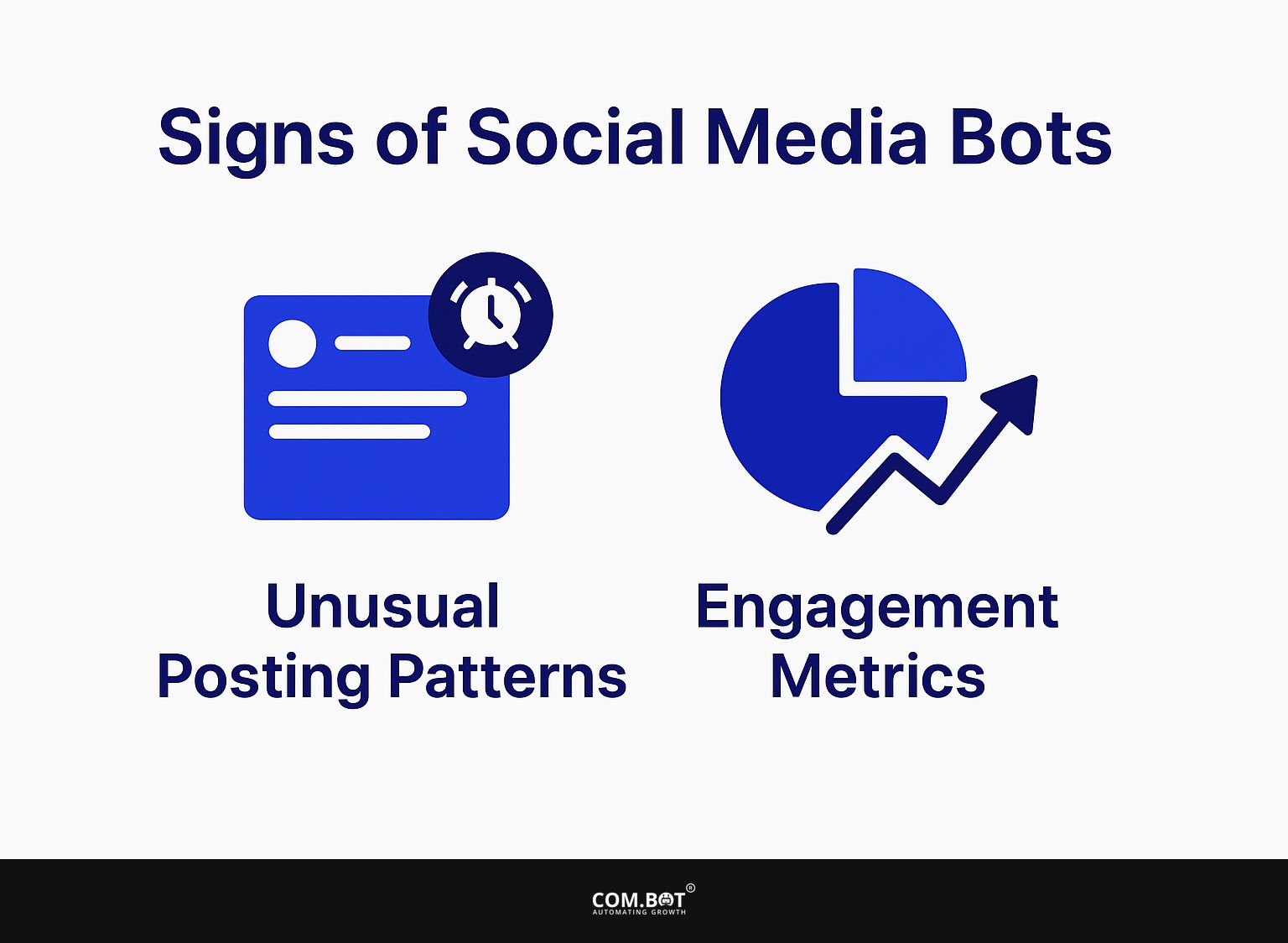
1. Unusual Posting Patterns
Unusual posting patterns, such as high-frequency posts within short time spans, are a telltale sign of bot activity, often used by spam bots to dominate conversation threads.
To identify abnormal posting behavior, monitor specific metrics like posts per hour or engagement rates. Tools like Botometer can help analyze Twitter accounts for irregular patterns, such as a sudden spike in activity or a constant barrage of posts at odd hours.
For example, if an account averages five posts daily but suddenly shifts to 50 in an hour, it’s worth investigating further. Recognizing these patterns can aid in filtering out spam and maintaining the integrity of discussions.
2. Engagement Metrics
Engagement metrics such as likes, shares, and comments that are disproportionate to follower counts can signal the presence of bots manipulating social media interactions.
To examine how well your audience interacts with your content, begin by using tools like Hootsuite or Sprout Social, which offer information about engagement rates.
For example, if a post garners 500 likes from a page with 1,000 followers, this could indicate unusual activity. Compare these figures over time; a sudden spike in engagement with little increase in followers may suggest bot involvement.
Check for patterns in comments or shares that look generic or automatically generated, as this can help confirm your results.
Tools for Detecting Bots
There are many tools and methods to find social media bots, from advanced software to hands-on analysis. If interested, you might explore our guide on how to detect AI bots on social media for more in-depth strategies.
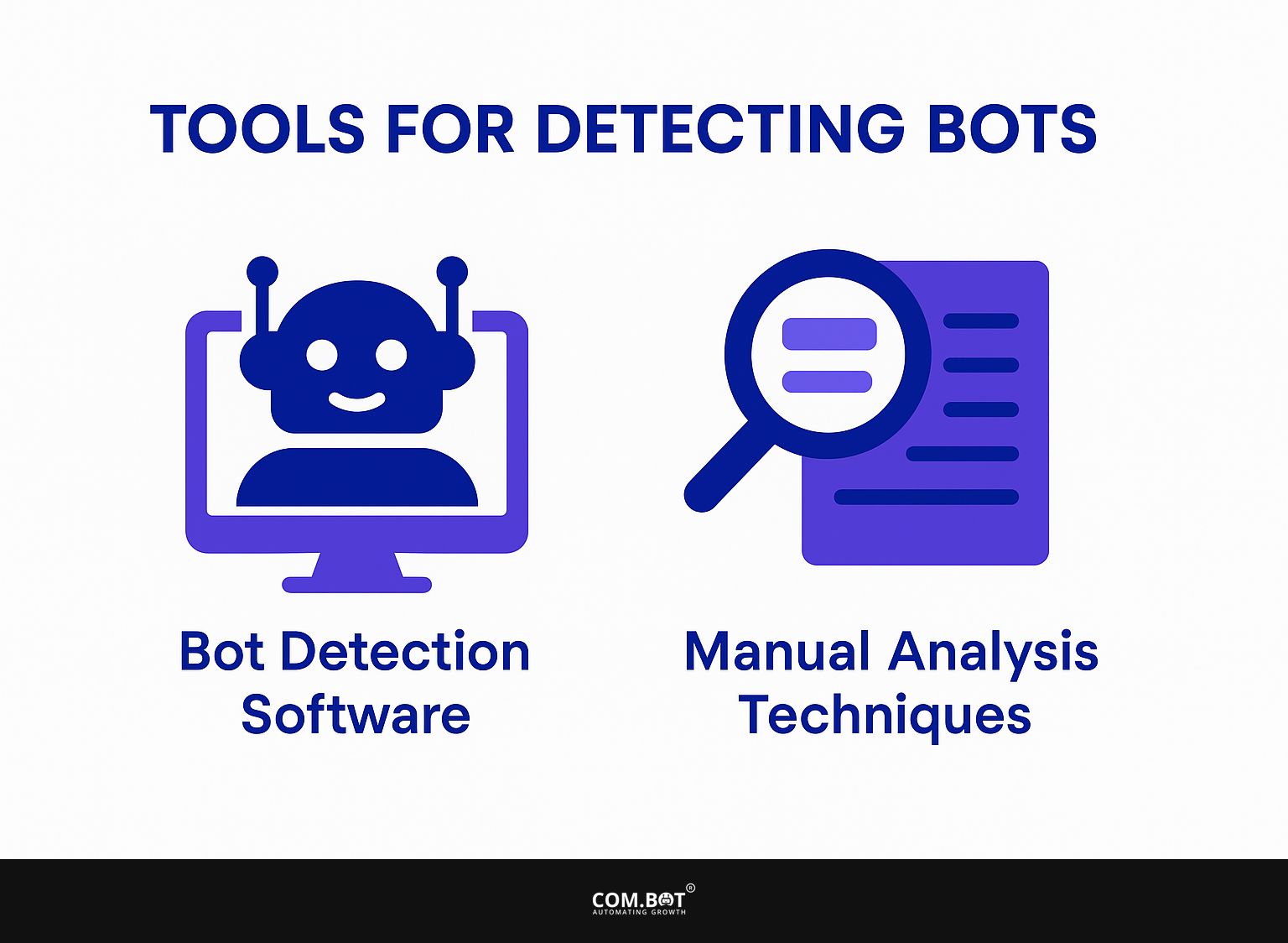
1. Bot Detection Software
Botometer and Bitdefender are leading tools for detecting bots, offering detailed checks that identify bot activity with over 90% accuracy.
To look into more choices, think about using tools such as Distil Networks and DataDome.cDistil Networks provides fast tracking and the option to change settings, ideal for large businesses. Unlike others, DataDome connects easily with many web applications and uses machine learning to better identify threats.
Looking at these tools for their cost, ability to grow, and unique features can greatly improve your bot protection plan, keeping your site safe from harmful actions.
2. Manual Analysis Techniques
Looking at details like metadata can show bot activities. For example, noticing odd patterns in metadata can help identify bots. To deepen your analysis, start by checking account histories for anomalies, such as unusually high activity during off-peak hours.
Use tools like Google Analytics to track engagement patterns across different time frames. Pay attention to sudden spikes in activity or engagement metrics that don’t align with typical user behavior.
Compare follower increase to how much people interact; having many followers but little interaction often suggests fake accounts. Following these steps can greatly improve your skill in finding and fixing possible problems.
Best Practices for Marketers
Following good methods for keeping an eye on social media bots is important for marketers who want to keep real interactions and stop false information.
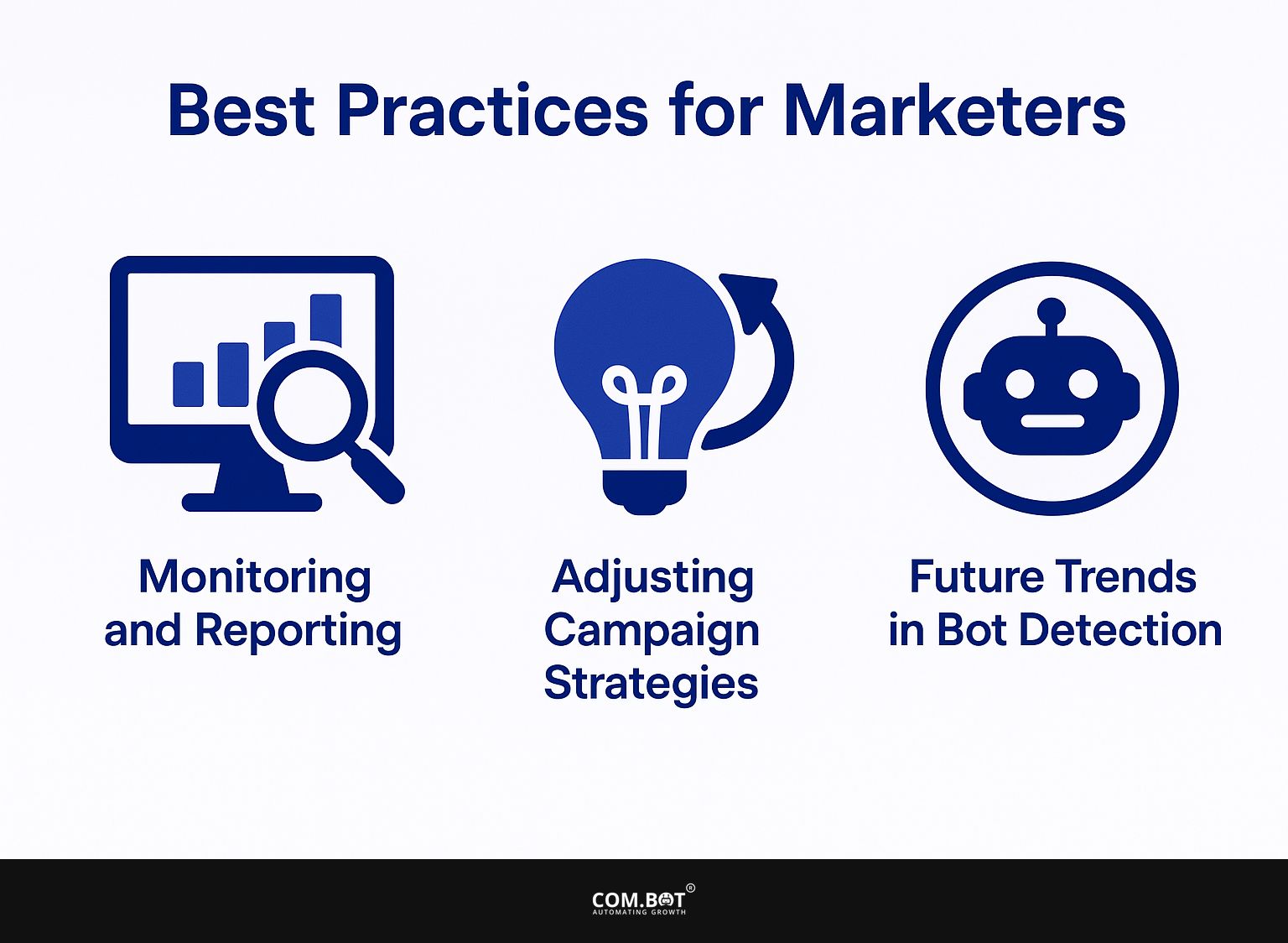
1. Monitoring and Reporting
Regularly checking and reporting on bot activity can improve campaign success, enabling changes based on current interaction data.
To make your monitoring better, write down key numbers to review each week.
- Focus on bot activity indicators like response times and error rates, alongside user engagement metrics such as click-through rates and comments.
- Tools like Sprout Social or Google Analytics make this reporting easier, providing real-time data.
- Set up alerts for unusual patterns, like sudden drops in engagement, to proactively address issues.
- Weekly evaluations identify trends and help improve strategies for better performance.
2. Adjusting Campaign Strategies
Changing campaign plans based on bot activity measurements can greatly increase marketing success and build public confidence. To respond effectively to bot detection, focus on key performance metrics like engagement rates, click-through rates (CTR), and conversion rates.
For instance, a campaign by a leading e-commerce brand monitored unusual spikes in CTR that indicated bot activity. They improved their audience targeting and applied tighter bot filters, leading to a 25% rise in real user interaction.
Tools like Google Analytics and SEMrush can track these metrics, helping to make changes instantly to improve campaign results and keep it genuine.
3. Future Trends in Bot Detection
New ways to find bots now use large language models and ongoing learning techniques to make automated detection systems more accurate.
For instance, researchers at the University of Washington are using learning algorithms that constantly improve detection rates by studying new patterns of bot behavior. These methods use past data and current feedback to improve the models.
By using tools like BERT and standard methods to detect bots, systems can better identify subtle differences between content created by humans and bots.
These inventions significantly improve the performance of automated systems across various platforms. For an extensive analysis of this trend, our comprehensive guide on detecting AI bots on social media examines various techniques used in the field.
Social Media Bot Detection Statistics
Social Media Bot Detection Statistics
Bot Characteristics and Detection: Bot Prevalence
Bot Characteristics and Detection: Impact of LLM on Detection
The Social Media Bot Detection Statistics give a detailed view of how common bots are on social media, especially during important events, and the growing difficulty of finding these bots, particularly with the rise of large language models (LLMs).
Bot Characteristics and Detection focuses on two main areas: the prevalence of bot users and the impact of LLM on bot detection systems.
- Bot Prevalence: It is observed that on average, 20% of social media users are bots. This figure highlights the large number of automated accounts on platforms meant for people to connect. More notably, during critical events such as the US elections, this percentage spikes dramatically to 43%. Such a high concentration of bots during important political events highlights the potential influence bots can have on public opinion and electoral processes.
- Impact of LLM on Detection: The advent of LLM-based bots has introduced new challenges in detection. These sophisticated bots can reduce the performance of existing detection systems by 30% This makes it difficult to tell apart human actions from machine actions. But improvements in detection technology appear to be hopeful. Systems trained specifically with LLM data have shown an improvement in detection by 9%, indicating that while LLM-based bots pose a challenge, continued development in detection methodologies can mitigate their impact.
This dataset highlights the changing methods used for identifying bots on social media platforms. The large number of bots, especially during important events, requires strong detection methods. Although LLM-based bots present new challenges, ongoing improvements in detection systems provide a hopeful outlook for mitigating their influence.
In summary, the Social Media Bot Detection Statistics emphasize the need for ongoing improvements in detection technologies to match the increasing complexity of bots. The data points to the importance of vigilance and innovation in maintaining the integrity of social media platforms.
Frequently Asked Questions
One way to detect social media bots is by looking at their activity and engagement. Bots tend to have a high volume of posts and likes, but low engagement from actual users. You can look for common profile pictures, missing personal details, and repeated posts as signs of a bot account.
Yes, there are many free tools that can find social media bots. Some popular options include Botometer, Fake Follower Check, and Hootsuite’s Bot Builder. These tools use algorithms to analyze account activity and provide a likelihood of bot presence.
Yes, most social media platforms have a reporting feature where you can flag a suspected bot account. This information is then reviewed by the platform’s team and appropriate actions may be taken, such as removing the account or limiting its activity.
Knowing which accounts are bots can help marketers better understand their audience and target their campaigns more effectively. It can prevent wasting resources on fake accounts and improve data analysis accuracy.
Yes, there are a few common red flags to watch out for when trying to identify bots. These include a high number of posts and likes in a short period, lack of personal information, and repetitive or spammy content. If something seems too good to be true, it’s worth investigating further.
Unfortunately, yes. Social media bots can be used to spread misinformation, manipulate public opinion, and even scam people. This is why it’s important for marketers to be able to detect and report bot accounts, and for social media platforms to take action against them.
